
VR / AR: Sidsel Meineche Hansen
Sidsel Meineche Hansen has an ongoing interest in virtual and robotic bodies and their relationship to human labour within the gaming, pornographic and tech-industries. Her solo show at Chisenhale Gallery last year, titled Welcome to End-Used City, made use of video game technology to interrogate themes including surveillance, sex dolls and privacy. Her interest in the increasingly murky realm of virtual space now feels more relevant than ever, as many around the world explore alternatives to face-to-face contact during a pandemic. She has just been announced as one of the ten recipients of this year’s Turner Bursaries, which replace the Turner Prize for 2020, with particular praise given to her innovative use of VR and AR in her work. This summer she will exhibit at Galeria Municipal do Porto (until 16 August), as part of a group show focused on masks and their place in the digital age.
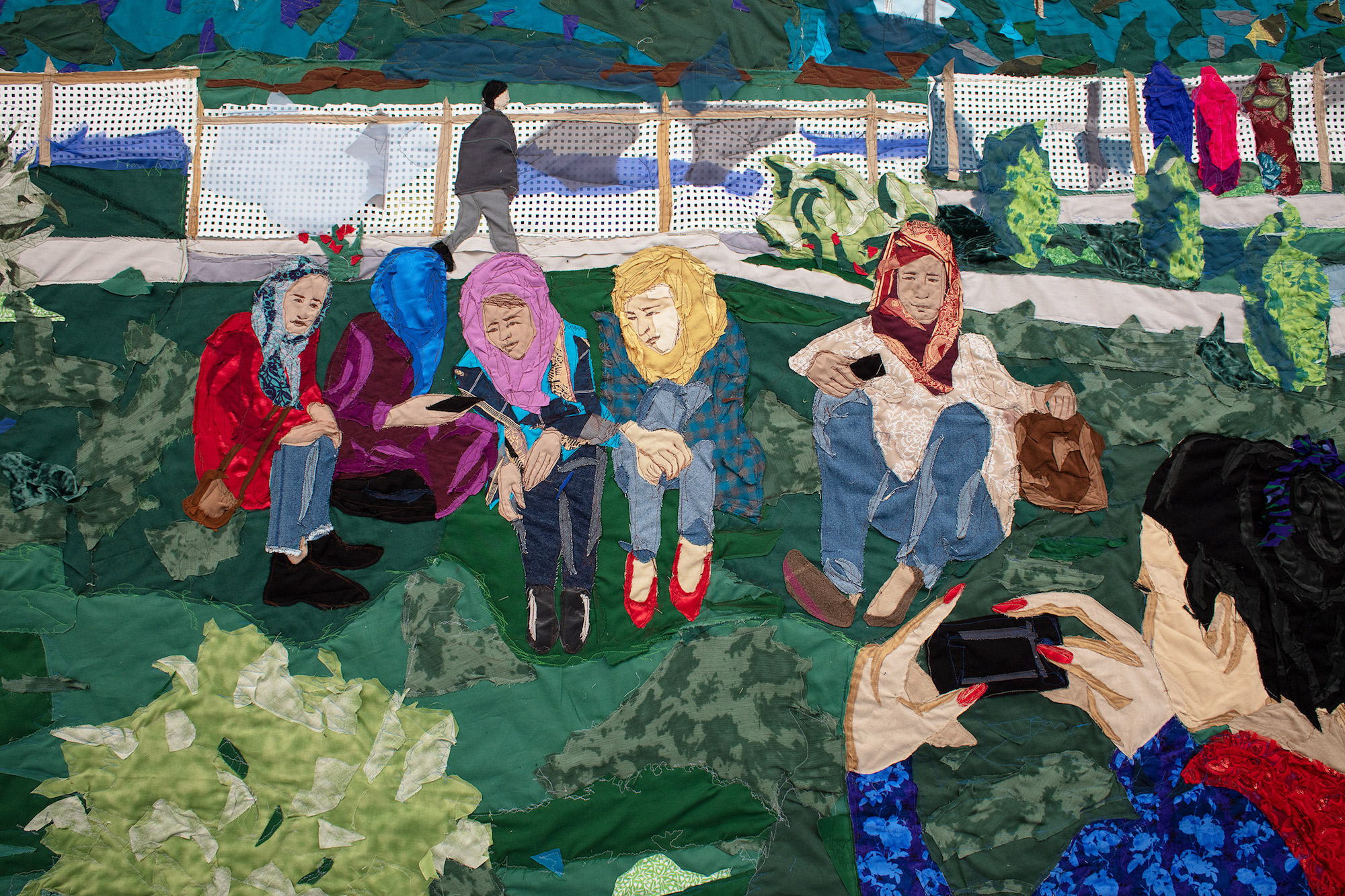
Textiles: Hangama Amiri
This year, Perrotin has provided an “alternate platform” for those graduating Yale University’s Painting and Printmaking MFA class. Hangama Amiri’s textiles works are included, which depict busy scenes influenced by her experiences growing up as a refugee in Central Asia. “I was drawn to the colourful silks worn by Tajik women in Dushanbe, Tajikistan, to the complex floral patterns in the bazaars of Pakistan, and especially to the bright colours in Afghan traditional dresses,” she says. Her works explore female pleasure and hidden desires, which are often referenced through visual signals such as red nail varnish, lipstick and eye-catching fabrics. She uses sewing as a technique to symbolise “fragmented” identities, and to celebrate female self-expression through dress. “Using these symbols also allows me to give my women a sense of freedom and power in sensuality and sexuality, desire and pleasure, in contrast to norms of women’s bodies as something very private, hidden, secret…” (Emily Steer)
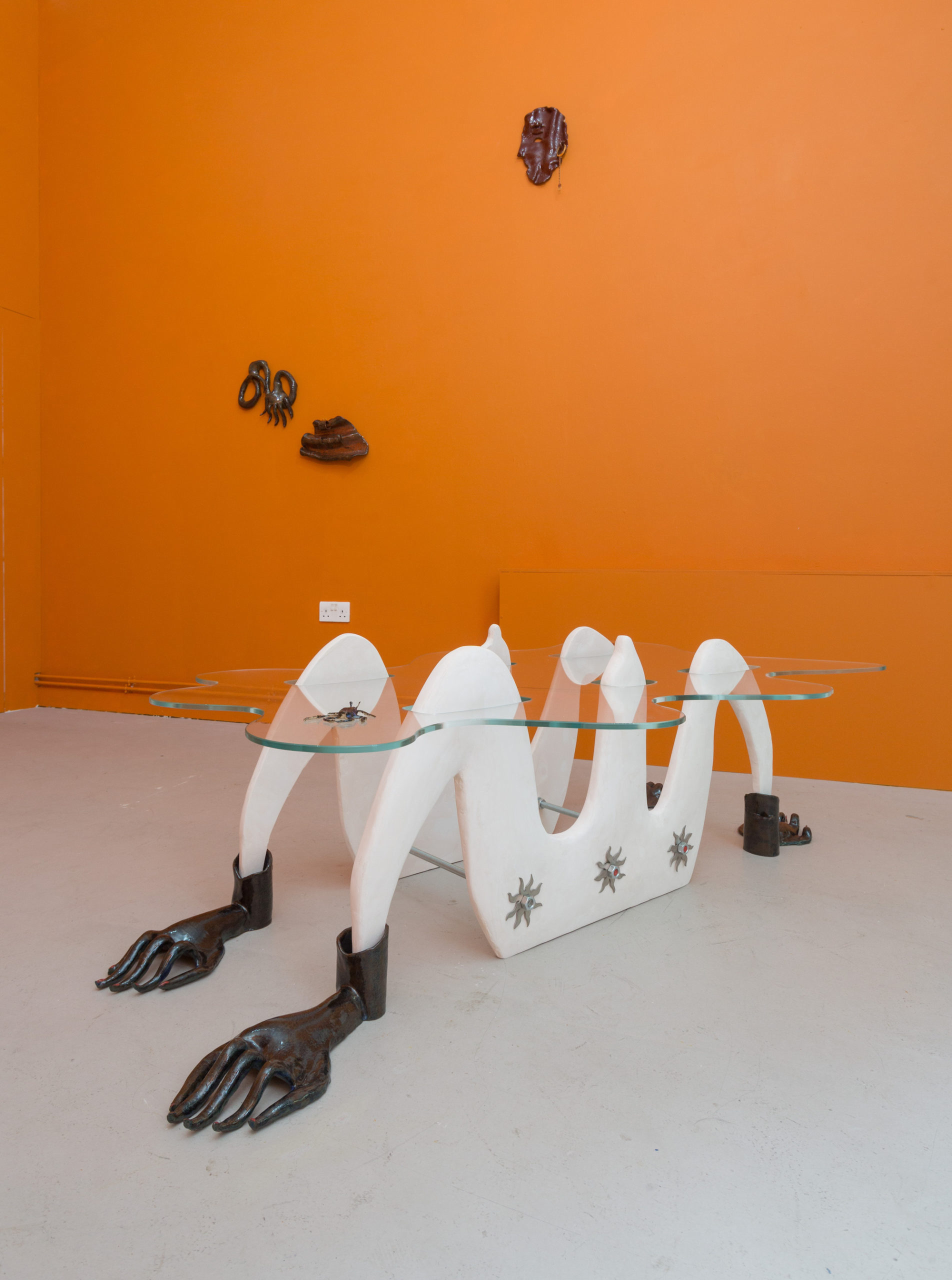
Sculpture: Anousha Payne
Tamil folklore and the spiritual potential of objects are key concerns for London-based artist Anousha Payne. She creates her own versions of shape-shifting creatures and supernatural characters through assemblages of ceramics, perspex and resin; balancing fantastical narratives and ancient mythologies with the more familiar signifiers of domesticity, such as household furniture. What is more, her process of “imagining artefacts” raises pertinent questions of cultural appropriation and empowerment, at a time when museum repatriation is being ferociously debated. In her current exhibition Indigo+Madder (until 1 August) the incorporation of fabricated reptilian skins also allude to ideas of transformation and rebirth, not to mention a dismantling of prescribed ideas of beauty and commerce (here’s looking at you, snakeskin handbags). (Holly Black)
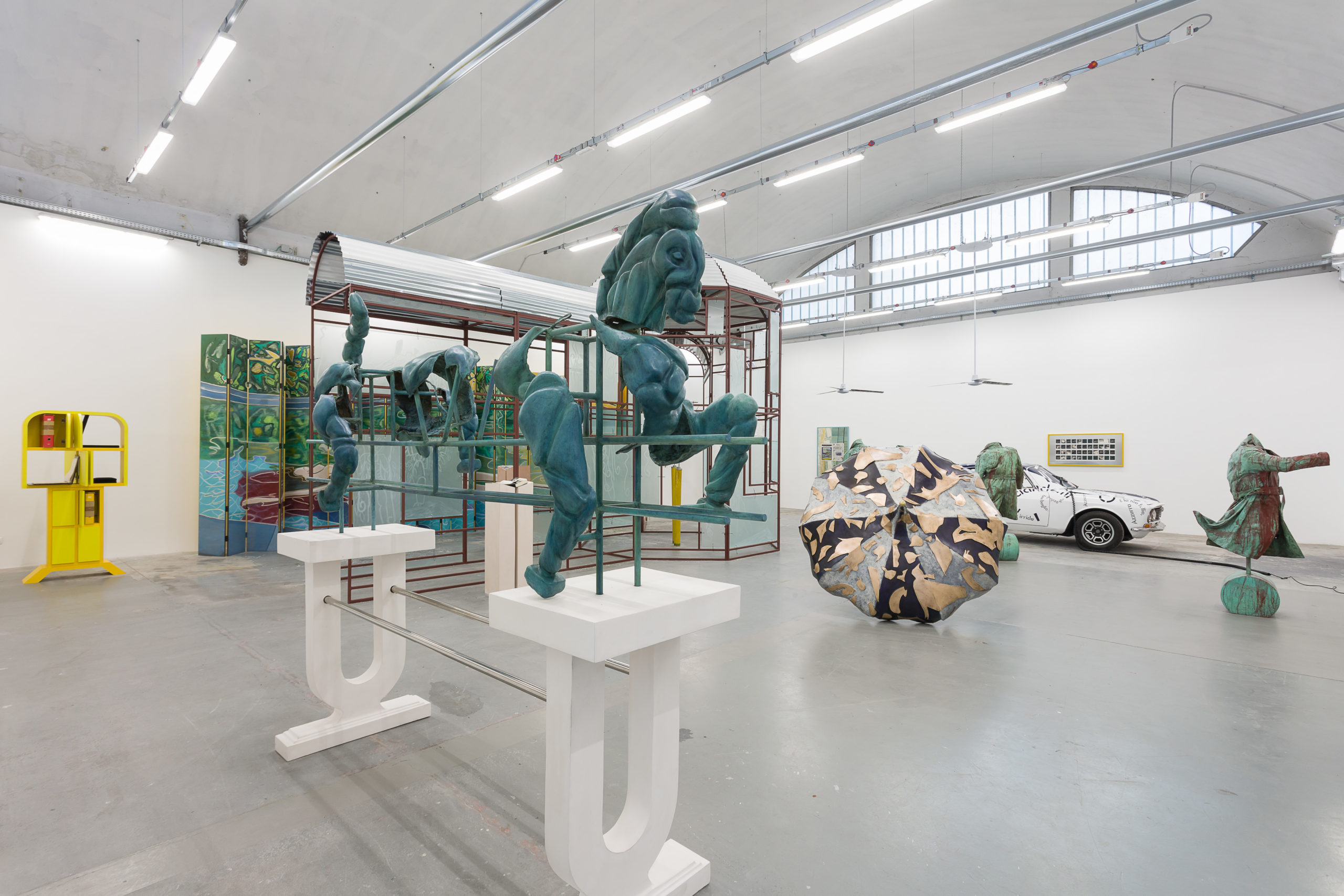
Than Hussein Clark, L’Isola dei Baci (Disappearing Acts), installation view at Kura, 2019. Photo by Mark Blower. Courtesy the artist and VI VII Oslo
Sculpture / Theatre: Than Hussein Clark
Than Hussein Clark has a curious eye for interior details and spaces. His exhibitions bustle and burst forth with layers of references, from theatre to queer culture to filmmakers such as Rainer Werner Fassbinder. The London-based artist delves deep into subculture and little-known details of baroque past lives, as in last year’s solo show, titled The Paintings of Selma Vaz Dias, at Damien & The Love Guru in Brussels. The exhibition saw Clark pair his own sculptures with the little-known paintings of stage actress Selma Vaz Dias, popular during the 1930s and 40s, juxtaposing traditional frames with sheets of perspex, mirrors and resin. A founding member of the artist-run publisher and radio Montez Press, he has also participated in the Young Vic Directors Program, alongside exhibiting at venues including Centre Pompidou in Paris and Galerie Crèvecoeur Marseille. He has just been announced as one of the artists selected to appear in British Art Show 9. (Louise Benson)

Sculpture: Frances Drayson
Frances Drayson, a graduate of the Royal Academy, is looking forward to exhibiting in a group show at Collective Ending in July, titled The Land of Incomparable Beauty. Drayson’s work is concerned with the alignment between cultural production and mass manufacture. Through a multidisciplinary lens, the exploration of these concepts manifests mainly through sculpture, following a hybrid of inspirations, from trainers to techno. Exploring the possibilities of dissent, her recent works dissect the devices of sequence, restraint and repetition often found in minimalism, churches and fascist architecture. This interest in breaking down structures of control in order to reimagine the new is a timely one, as the world reckons with a post-pandemic unreality. Later in the year, Drayson will present a solo show at Art Lacuna. (Anoushka Khandwala)
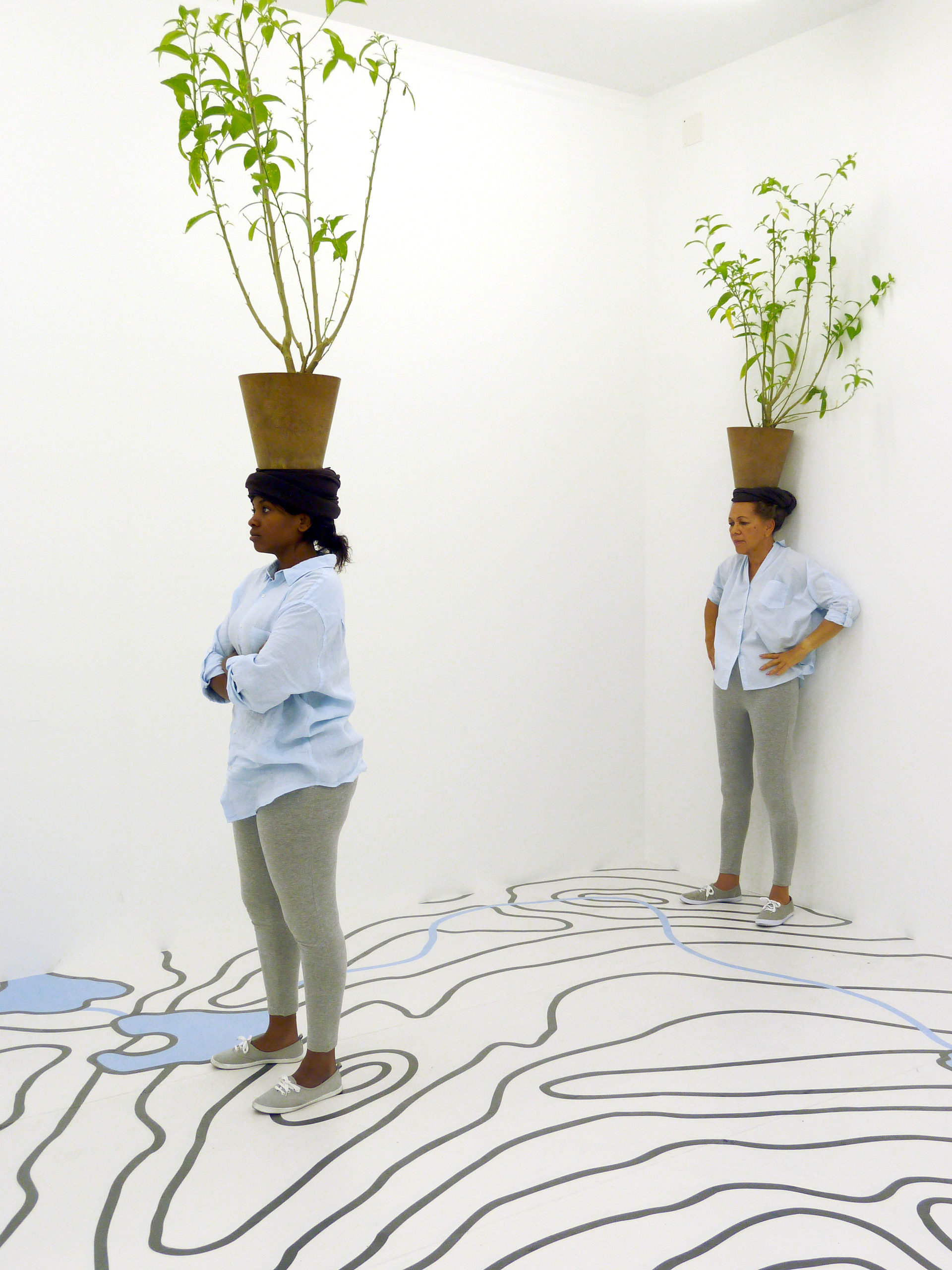
Multidisciplinary: Otobong Nkanga
From performance and installation to sculpture and painting, Otobong Nkanga’s practice is expansive. At its heart is a preoccupation with the manifold interpretations of “land” and the way in which it shapes and reflects all aspects of our society, including the colonial contexts of invasive mining and the global implications of exploiting our natural resources. Nkanga is opening a major new retrospective, titled There’s No Such Thing as Solid Ground, at Gropius Bau (until 13 December) following a year-long residency. Among the works is a new iteration of her project Carved to Flow, which was first conceived at documenta 14. This workshop-cum-artwork is based around the circular economy of manufacturing, distributing and selling 08 Black Stone soap, while simultaneously sharing knowledge and placing emphasis on mutual human connection. (Holly Black)
View this post on Instagram
Illustration / Design Ashton Attz
Ashton Attz describes themselves as a queer, Black, non-binary artist, whose work empowers the everyday person. Their playful illustrations feel relatable with a smidge of the utopian, utilising celebratory colour and whimsical characters. 2020 got off to a flying start for the 21 year old artist, who was the recipient of the Evening Standard art prize in 2018, when they were commissioned by Universal Music to create a body of artwork for the official Brit Awards afterparty. Playfully named Turn Heads and Turntables, the collection adorned the party invitations, a special edition print gifted to the artists and an immersive exhibition space. Soon after, they teamed up with artist platform Creative Debuts to sell a print that they titled Superheroes and Superstars, in order to raise money for NHS workers. Ashton has since designed the official Pride stickers for Instagram this June, and we can’t wait to see what the future holds for them. (Anoushka Khandwala)
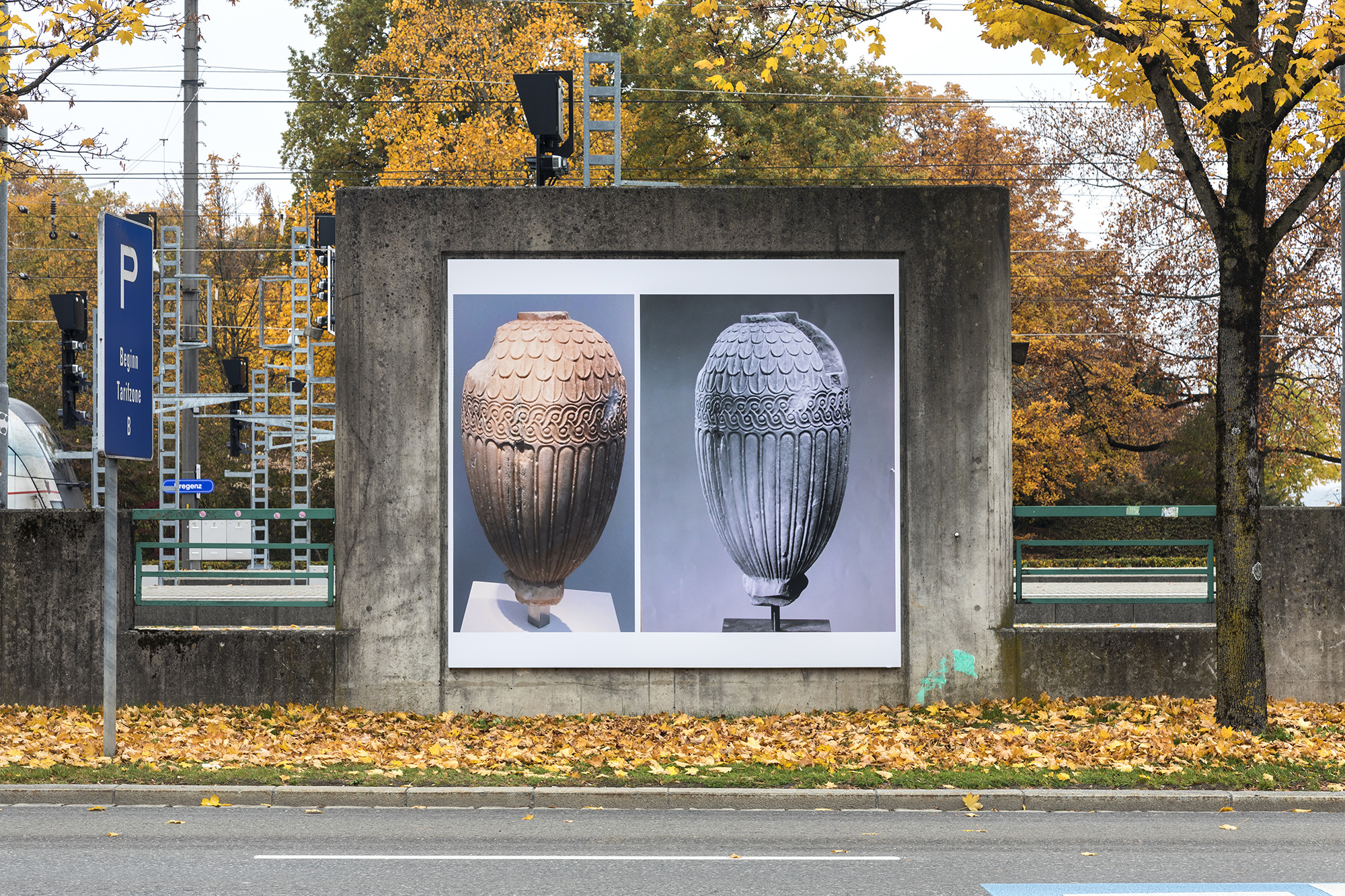
The Goods (2018) Installation view KUB Billboards, Photo By Markus Tretter
Video: Maeve Brennan
Maeve Brennan investigates the relationships between objects and their histories; communities and their surroundings; and the idea of materiality itself. Working mostly in images and film, she uses a documentary approach, carrying out long-term investigations into ancient regions such as Lebanon and Palestine—and drawing on the rich histories of both the land and the people. In a recent interview with Somerset House (where she is a studio resident) Brennan describes her practice in detail. “I gain intimacy and proximity with people and places and allow these encounters to lead the work, with the aim of producing complex and layered accounts that disrupt dominant representations”. Her film The Drift (2017) was produced by Chisenhale Gallery and Spike Island, and investigates how the acquisition of knowledge informs our understanding of objects—from rocks to old cars. She has had solo exhibitions at The Whitworth, Spike Island and Chisenhale Gallery. (Ravi Ghosh)
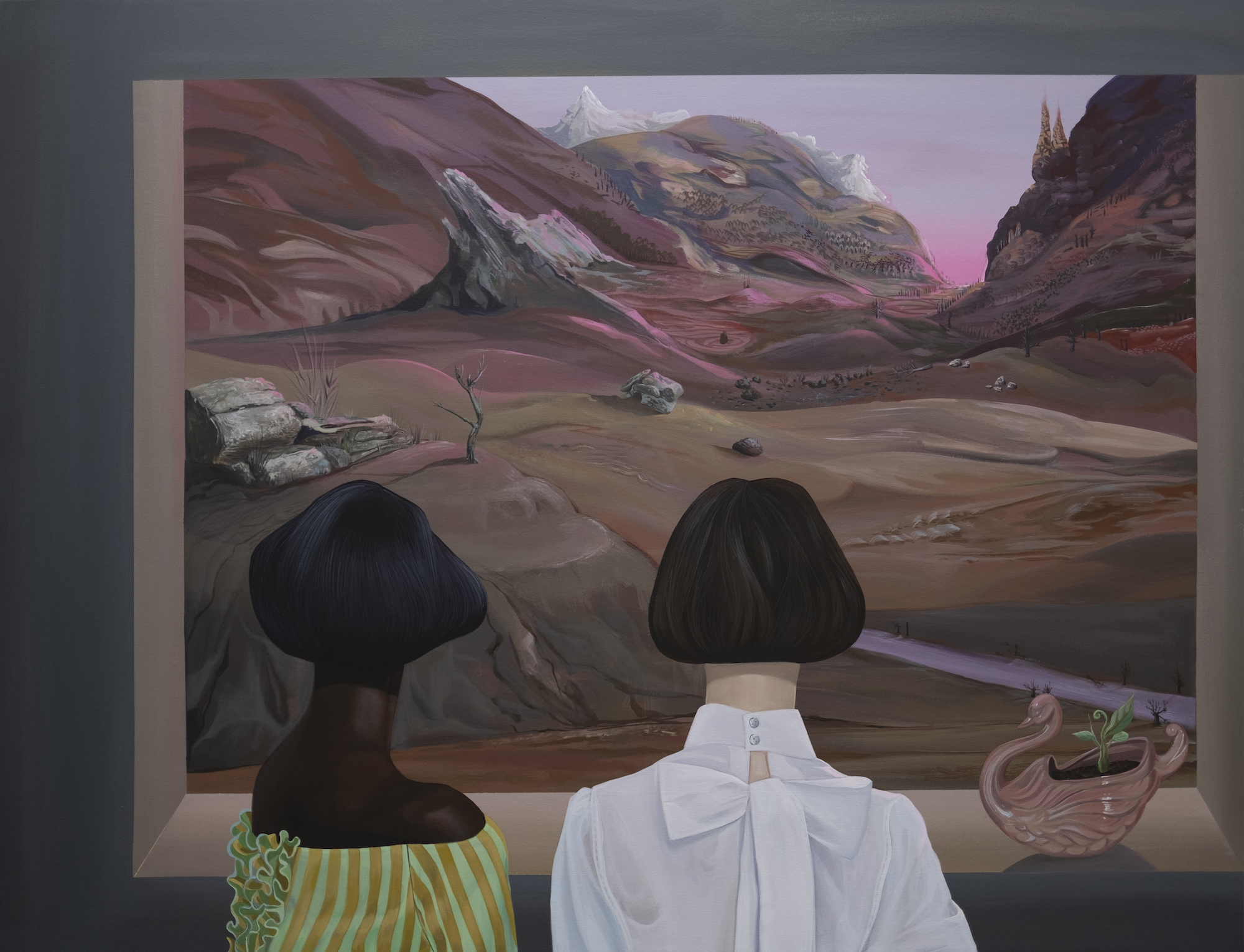
Painting: Dalton Gata
Dalton Gata’s unsettling yet humorous paintings were recently shown by Peres Projects in Art Basel’s online viewing rooms. Now his work can be seen as part of Galeria Agustina Ferreyra’s digital project, titled A Watched Pot Never Boils: Meditations on Food and Time. The Cuban artist’s paintings have a surreal edge to them, recently combining harsh, rocky landscapes with still-life compositions, mythological beasts and wry nods to the contemporary world. In one particularly meta work, he depicts the back of two glamorous women’s heads and shoulders as they gaze out of a window across a desolate, pink-skied terrain. Gata previously worked as a fashion designer, and his Instagram account shows off the versatility of his practice, with a selection of recent iPad sketches, expressive pencil drawings and playful, heated photo shoots. (Emily Steer)
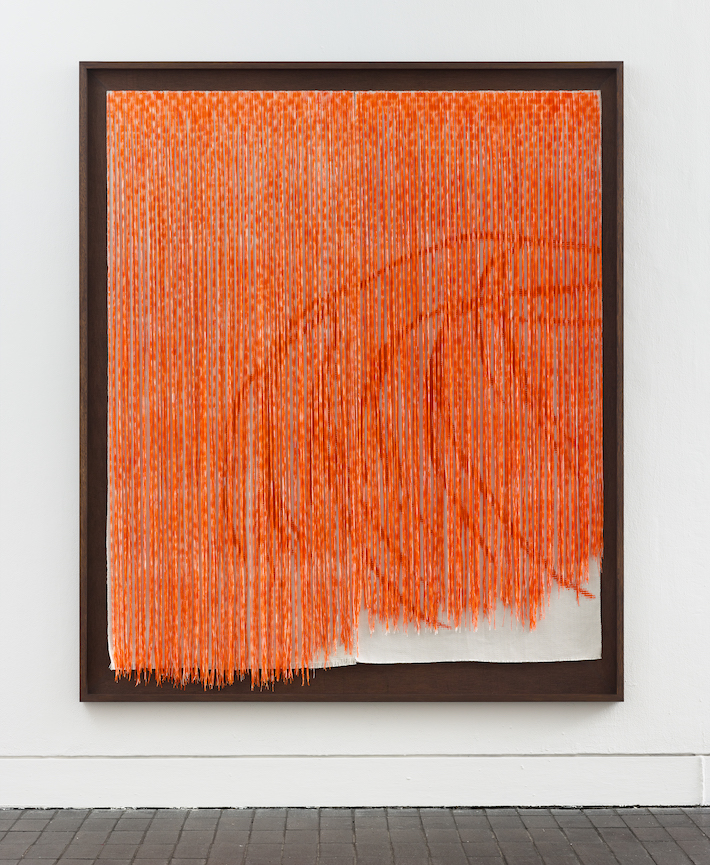
Textiles: Mark Corfield-Moore
For his commission as a recipient of the 2019 Jerwood Makers bursary, Mark Corfield-Moore explores the process of weaving—drawing upon research in northern Thailand and the Scottish Highlands, where he observed the techniques of rural communities, and sought to connect with his own Thai heritage. The resulting works are studies in fiery orange, each a showcase of curation as well as creation. They are the culmination of hundreds of small decisions made by the artist—of when to allow the thread to hang in uniform lines, and when to pin and redirect the material into arcing streaks. Jerwood Makers Tour is currently paused at Manchester Art Gallery; Corfield-Moore has also exhibited at the Royal Academy of Art, and in Lisbon, New York and Stokkøya, Norway. (Ravi Ghosh)





